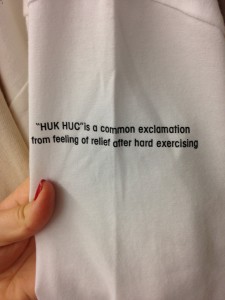The “Thin Phenomenon”, Homosexuals, and More: Some Observations
Welcome back! Let’s get right into it. Topics of the day include: “Where Are All the Fat People?” and “Gays: No Bueno” with bonus categories such as “Mormons!” and “A Small, Yet Amusing Compilation of Creative Uses of the English Language”. Off we go.
“Where Are All the Fat People?”: This is a question I ask myself on a daily basis as I shove my busty 5ft8in frame like a battering ram through crowds of petite Asian women with figures similar to 5ft Korean Barbie dolls. Perhaps as an American, my opinion on what constitutes an “average” body size is slightly skewed given the well-known fact that Americans are well above “average” (I mean, Americans invented the “Fat Acceptance Movement”, that should tell you everything you need to know). Everyone claims that the traditional Korean diet is exceedingly healthy, hence the reason why Koreans are able to ‘naturally’ maintain low body weights. While it’s true that traditional Korean meals are primarily comprised of rice (fat-free empty carbs), meat (lean protein), kimchi (fermented cabbage, not exactly an abundant source of anything unhealthy) and bean sprouts (basically water held together by air, if we’re being honest), in recent years there has been an influx of fatty fried foods (fried chicken joints, McDonalds, Pizza Hut, Burger King, not to mention there’s literally a Starbucks on every corner). Additionally, Korean women do not eat like the delicate baby birds they resemble; Korean women I’ve observed in restaurants literally inhale their food in a manner similar to the Super Smash Bros character Kirby. Combined with a complete lack of exercise facilities (apart from the campus gym, as far as I can tell there are no gyms, yoga classes, or CrossFit centers available to the greater public, or if there are they are certainly well-hidden), I am stumped as to how Korean women manage to maintain such slim physiques.
I’m going to boil this whole thing down to a math equation. Thus, we have:
Korean women whose eating habits rival the inhaling power of Kirby himself + a lack of any discernible exercise plan + a traditional diet that has been distorted by the arrival of fatty fried foods = Thin women i.e. the Korean “Thin Phenomenon”
While I have been able to draw a couple hypotheses, they are less-than-pleasant but not entirely off the mark. Basically, it is no secret that the majority of Korean society is infatuated with physical beauty. Plastic surgery ads are everywhere and each smiling woman on the advert appears to beckon to the viewer, insisting that “Yes, there is a new life awaiting just beyond the knife!” Even my professors unabashedly admit that many Koreans look the same, not because of their shared ethic/racial heritage but because the plastic surgery craze is quite literally transforming the nation. Thus, I have come to believe that the general consensus is: “What good would your new and improved face do if your body didn’t match?” Furthermore, I have also discovered that the term “diet” among Korean women has a different meaning. What would constitute an eating disorder in the western world might be passable as a harmless diet plan by Korean standards. For example, if one were to google the diet plan of a popular Kpop idol, suggestions such as “5 strawberries and 1 cucumber for dinner” or “1 sweet potato for lunch” might pop up as an legitimate diet suggestion. In America, another word for diet habits such as this might be… anorexia? But who’s to say. Cultural differences are a funny thing.
“Gays: No Bueno”: Although homosexuality is not criminalized in South Korea, gay marriage is still illegal. The Korean population’s reaction to homosexuality is… frosty, to put it kindly. On an evening out with a group of westerners and Koreans, I witnessed a western companion become increasingly intoxicated and proceed to loudly discuss how much he missed his boyfriend back home. When it became apparent to the Korean males in the group that there was a gay man in their midst, the mood of the night changed irrevocably. I know this is an odd metaphor, but the best way I can describe the situation is to refer to the scene in The Little Mermaid in which Ariel’s voice is stolen by the sea witch Ursula. The moment the word “boyfriend” left the westerner’s mouth it was as though some octopus woman had reached her clawed hand down the Korean boys’ throats- leaving them speechless- while the rest of us tried to recover in the atmosphere of uncomfortable hostility that was left in the wake.
Ironically enough, in Korea it is quite common to see male friends in close physical contact- intertwining arms, hugging, and at times even holding hands. As an American, the sight of two men engaged in such close physical contact indicates (to me) that they are most likely a couple or involved in some type of romantic relationship. However, by Korean standards, same-sex physical contact is merely a sign of friendship and nothing more. Thus, it is entirely possible that there is a myriad of gay couples on the streets of Seoul openly displaying their affection for one another and no one is the wiser.
Bonus round #1: “Mormons!”: The amount of Mormons I have seen out and about in Seoul is astonishing. They trot around politely, dressed in black pants and crisp white button-down shirts with spiffy name tags in English and Korean proclaiming “Elder John”, “Elder Thomas”, or “Elder So-and-So”. They are a fascinating group. Minnesota is not exactly a mecca of Mormon activity therefore I have not had much contact with Mormons in the past. To be honest, my knowledge of Mormons is limited whatever I could glean from The Book of Mormon (a fabulous play, if I do say so myself) and therefore I wouldn’t exactly say I have had a ‘traditional’ education about the Mormon religion. Nonetheless, I just find it amusing that I have to go halfway around the world to encounter a religious group whose roots are American through and through.
Bonus round #2: A Small Yet Amusing Compilation of Creative Uses of the English Language: I feel like this one is pretty self-explanatory. Whenever one travels to a country in which English is not the native language, one will undoubtedly encounter a few amusing mistranslations/misinterpretations of English words or phrases, and even a few where you have absolutely no idea what they were trying to get at.
This one reads: “HUK HUC is a common exclamation from feeling of relief after hard exercising”. I found it printed on the sleeve of a white t-shirt dress in a rather high-class boutique. The meaning still has yet to be deciphered.
I found this printed on a snapback at a street market. It reads: “I read a book in the mouth and spiny bumps”. I really don’t know where they were going with this one. I am seriously considering returning to buy it. So watch out, the Secret Santa at this year’s Christmas party is about to get weird.
Maybe one of these days I will actually get around to writing a ‘traditional’ blog post filled with fun pictures of Seoul and my trips around Korea. But maybe not, because that sounds kind of boring and I like writing a post wherein which I can discuss homosexuals and mormons in the same breath. Stay tuned!

